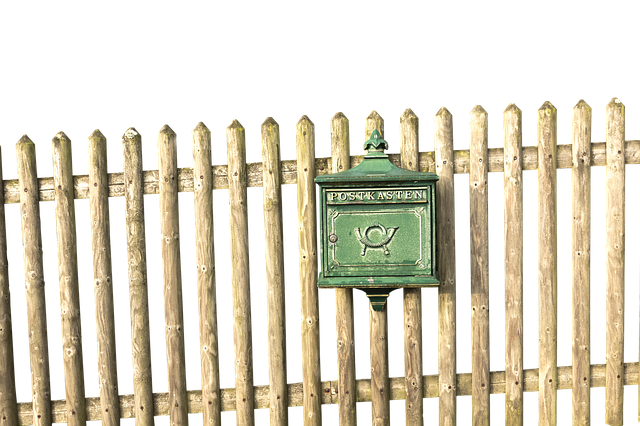New Bedford residents looking to enhance their outdoor spaces have an important decision ahead—choosing the right residential fence installation company. This article guides you through the process, from understanding local regulations and benefits of professional services to selecting materials, design options, and mastering the installation process. By following expert tips on maintenance, you’ll ensure your new fence not only boosts security but also adds aesthetic appeal to your property.
- Understanding Residential Fence Requirements in New Bedford
- Benefits of Professional Fence Installation Services
- Choosing the Right Fence Material for Your Home
- Design Options for Beautiful and Functional Fences
- The Installation Process: Step-by-Step Guide
- Maintaining Your New Fence: Tips from Experts
Understanding Residential Fence Requirements in New Bedford
When considering residential fence installation in New Bedford, MA, understanding local regulations is paramount. The city of New Bedford has specific guidelines regarding fence height, materials, and placement to ensure harmony with neighborhood aesthetics and safety standards. Typically, fences must adhere to certain height restrictions, often capped at 6 feet, and comply with setback requirements, leaving adequate space between the property line and the fence. Material-wise, wood and vinyl are popular choices among New Bedford residents, each offering distinct aesthetic and maintenance benefits.
Property owners should also factor in the intended purpose of the fence. Is it for privacy, security, or aesthetic appeal? These considerations will impact design choices, such as the type of posts, panels, and rails used. Additionally, homeowners must consider easements and property lines to avoid any legal complications during installation. Consulting with local authorities and a reputable fence installation company can provide valuable insights into meeting these requirements seamlessly.
Benefits of Professional Fence Installation Services
When considering residential fence installation in New Bedford, MA, opting for professional services offers numerous advantages. Expert fence installers bring a wealth of experience and knowledge to the project, ensuring your new fence not only enhances the aesthetics of your property but also stands the test of time. They possess the necessary tools, techniques, and safety expertise, allowing them to complete the job efficiently and effectively, minimizing potential risks.
Professional services also ensure precise measurements and accurate installations, leading to better overall quality. Additionally, many reputable companies provide warranties on their labor and materials, offering peace of mind for homeowners. Choosing professionals saves time and effort, as they handle all aspects from initial consultation to final inspection, leaving you satisfied with the results without any surprises.
Choosing the Right Fence Material for Your Home
When considering residential fence installation, selecting the right material is a crucial step. The ideal fence should not only complement your home’s aesthetic but also withstand local climate conditions and potential wear and tear. Common options include wood, vinyl, chain link, and iron, each with its unique advantages and drawbacks.
Wooden fences, for instance, offer a classic, natural appeal and can be stained or painted to match your home’s color scheme. However, they require regular maintenance to prevent rot and pest damage. Vinyl fencing is low-maintenance, durable against elements, and available in various styles, making it a popular choice. Chain link fences provide security without sacrificing visibility, while iron fences offer both strength and elegance, suitable for historic homes or those seeking a robust, long-lasting barrier.
Design Options for Beautiful and Functional Fences
When it comes to designing a residential fence, New Bedford, MA residents have numerous options to create both beauty and functionality. From traditional wood picket fences that offer a classic aesthetic to sleek metal panels providing security and modern charm, there’s a style for every taste.
Many companies also incorporate various features like added privacy with lattice work, decorative elements, or even built-in lighting to elevate the fence’s design. Fences can be tailored to fit unique yard shapes, incorporating curves or angles that complement the surrounding landscape while providing a secure and visually appealing boundary.
The Installation Process: Step-by-Step Guide
The installation process for a residential fence typically involves several key steps. First, a site assessment is conducted to evaluate the area where the fence will be erected. This includes measuring the perimeter and identifying any potential challenges or obstructions. Next, the necessary materials are gathered, including posts, rails, pickets, and hardware specific to the chosen fence style.
The actual installation begins with preparing the ground, which often entails removing vegetation and leveling the surface. Posts are then driven into the ground at strategic locations, serving as the foundation for the fence. After the posts are securely in place, horizontal rails are attached, providing support for the pickets (vertical boards). The final step involves installing the pickets, ensuring they align properly and create a secure, aesthetically pleasing barrier. Throughout the process, safety precautions are paramount, and proper tools and equipment are used to guarantee a high-quality installation.
Maintaining Your New Fence: Tips from Experts
After your new fence is installed, proper maintenance is key to ensuring its longevity and aesthetics. Regular cleaning is essential; brush away any debris or leaves that accumulate on the fence’s surface. Use a soft-bristled brush or garden hose to gently wash away dirt and grime. Avoid using harsh chemicals, as they can damage the fencing material.
For wooden fences, applying a fresh coat of sealant every few years will protect against rot and decay. Metal fences should be periodically inspected for rust spots; regular cleaning with mild soap and water, followed by a clear coat of paint or primer, can prevent long-term damage. Stay vigilant about fixing any broken components promptly to maintain the fence’s structural integrity and overall appeal.
